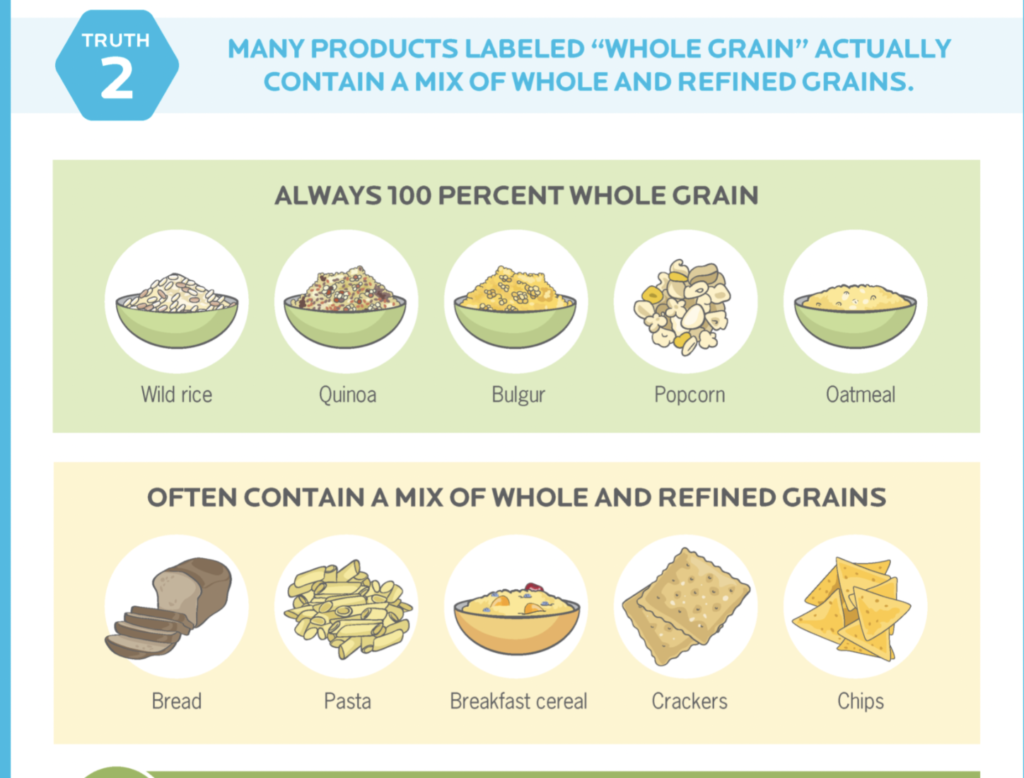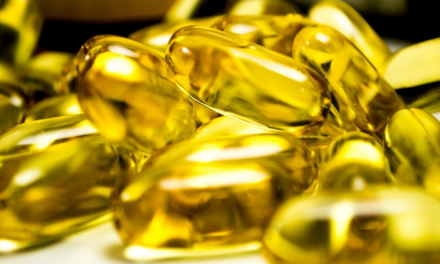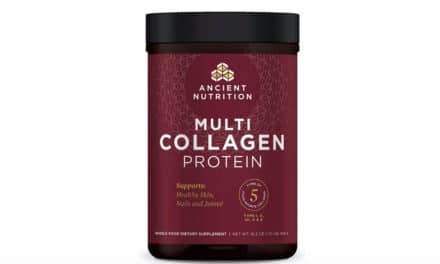Almost all of my meals contain protein, carbohydrates, vegetables, and fat. Many nutritionists considered this a balanced and healthy meal. One way to receive carbohydrates is through grains, but you can also receive carbohydrates from some fruits, nuts (although they are technically fruits too), and some vegetables. Grains range from processed white bread to minimally processed grains like quinoa and brown rice. Today, I want to speak about the difference between refined grains (which are almost entirely processed) and whole grains (which are only minimally processed). The difference is that whole grains generally contain more nutritional elements and are far healthier than refined grains. When I was a kid, white bread, cereal, and corn chips were abundantly available, but they reduced grains to a highly unhealthy element. Hopefully, this blog will make you more aware of choosing whole grains that are beneficial for your body to receive appropriate carbohydrates in your diet.
The information for this blog post will come from a combination of my knowledge and Precise Nutrition’s article “The Truth About Whole Grains vs. Refined Grains. [Infographic].” First of all, it is okay to eat refined grains as they are an important part of many food cultures and lives today, but hopefully, you can limit ones that are not that healthy. Additionally, some refined grains can be infused with nutrients that make them healthier than whole grains. This normally occurs with some healthy cereals. The grain normally consists of four parts: Hull, Bran, Endosperm, and Germ. The hull is the inedible protective layer removed during processing. Most grains require you to remove the hull before eating them, which can be considered minor grain processing. The bran is the kernel’s skin and is rich in antioxidants, phytonutrients, minerals, B vitamins, and fiber. Removing this part of the grain will reduce the nutrient density in the grain. The germ is the grain’s embryo that is rich in B vitamins, vitamin E, antioxidants, phytonutrients, and unsaturated fats. The germ has the most nutrients in the grain. The endosperm provides food for the germ and contains some starchy carbohydrates, some protein, and some B vitamins.
The different levels of processing determine how much of the grain is removed. When people solely remove the grain’s hull, it is considered minimally processed but does not remove any of the nutrients within the grain. These grains include ancient grains like barley. The next level of processing is partially germinating the seed, which allows the grain to sprout. This process makes it easier for your body to absorb nutrients and may sometimes allow for more nutrients to be absorbed in your body. This means that even though this type of grain is more processed, it can be more nutritious than less processed grains. An example of this type of grain is brown rice. The next levels of processing are moderately healthy (but there are always exceptions), which involves cracking the grain, cutting the grain, or rolling the grain. Next, puffing is a technique that infuses the grain with air which is how people create puffed wheat cereal. Depending on the amount of puffing used, this technique can still leave the grain with many benefits for the body. The second to last processing level is grinding the grain, which people use to make four. The worst level of processing is called pearling/polishing and involves removing the bran and germ of the grain, reducing the nutrient quality significantly.
Most people use a combination of refined grains and whole grains to make products. Many products labeled as a “whole grain” will also sometimes contain some refined grains. Things like wild rice, quinoa, bulgur, popcorn, and oatmeal are always 100 percent whole-grain, but bread, pasta, breakfast cereal, crackers, and chips contain a mix of both whole and refined grains. While you should try to consume more whole grains, sometimes refined grains are combined with protein, vitamins, and fiber that can make refined grains just as healthy as many whole grains. When buying a refined grain product, I would encourage you to choose the product that is minimally refined or refined but contains nutritious compounds that still ensure benefits for the body. Another good suggestion would be to eat significantly more minimally processed grains than refined grains. The larger this ratio, the better you will most likely be. This is a basic rule, and the only loophole would be finding refined grains infused with essential nutrients.

Hopefully, this blog post helped you understand, at least a little, the difference between whole grains and refined grains. Understanding that you should view this spectrum helps you understand that most grains are processed at least a little bit. The processing techniques that remove anything but the grain’s hull remove more nutritious compounds and will most likely be less healthy. Again, there may be exceptions with refined grains infused with other ingredients or germinating the grain, which you will need to look out for when eating a product containing grains. Please continue to be more aware of what you are putting into your body, and eat grains that give you a healthy amount of carbohydrates, vitamins, and minerals to have a more balanced diet.






